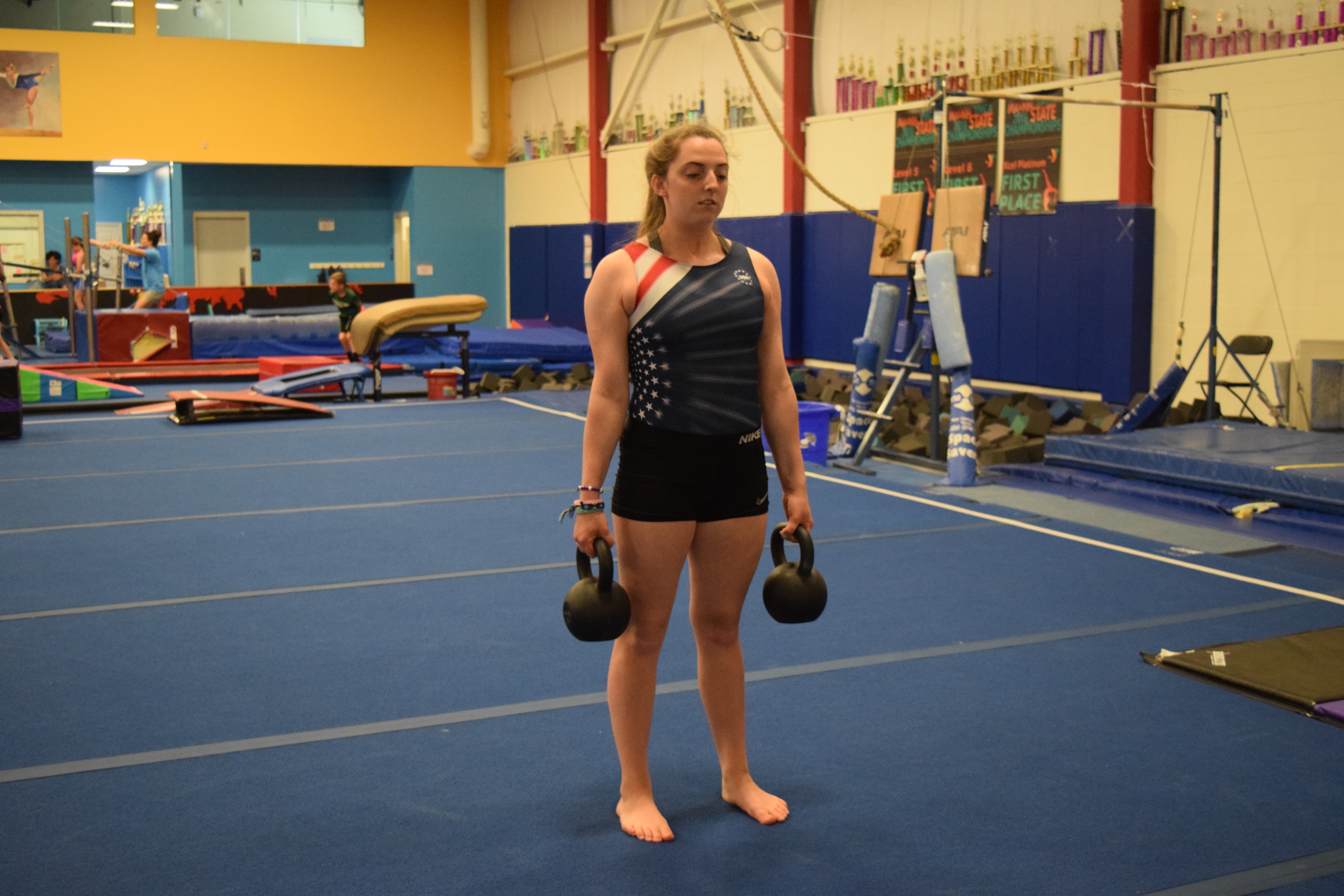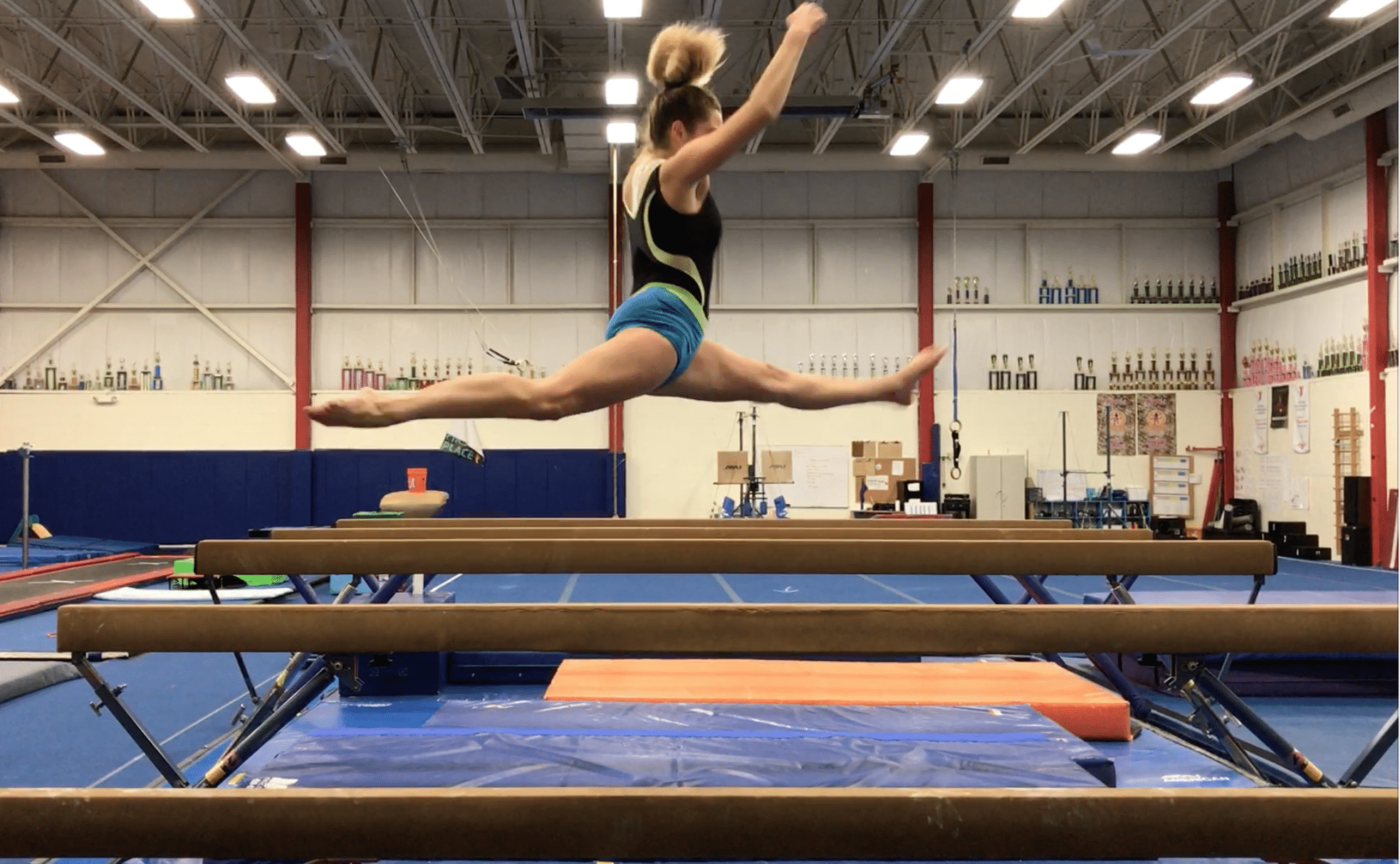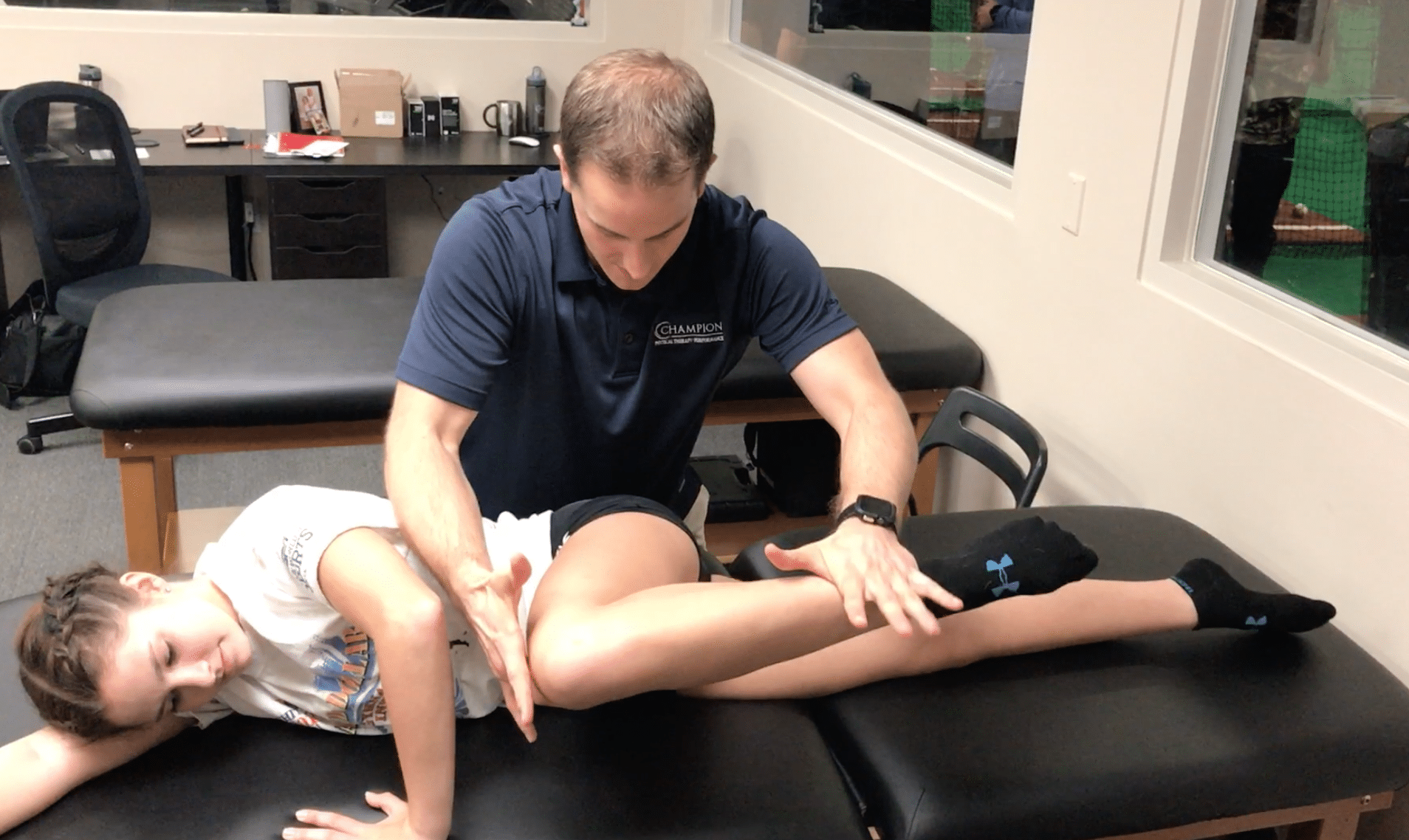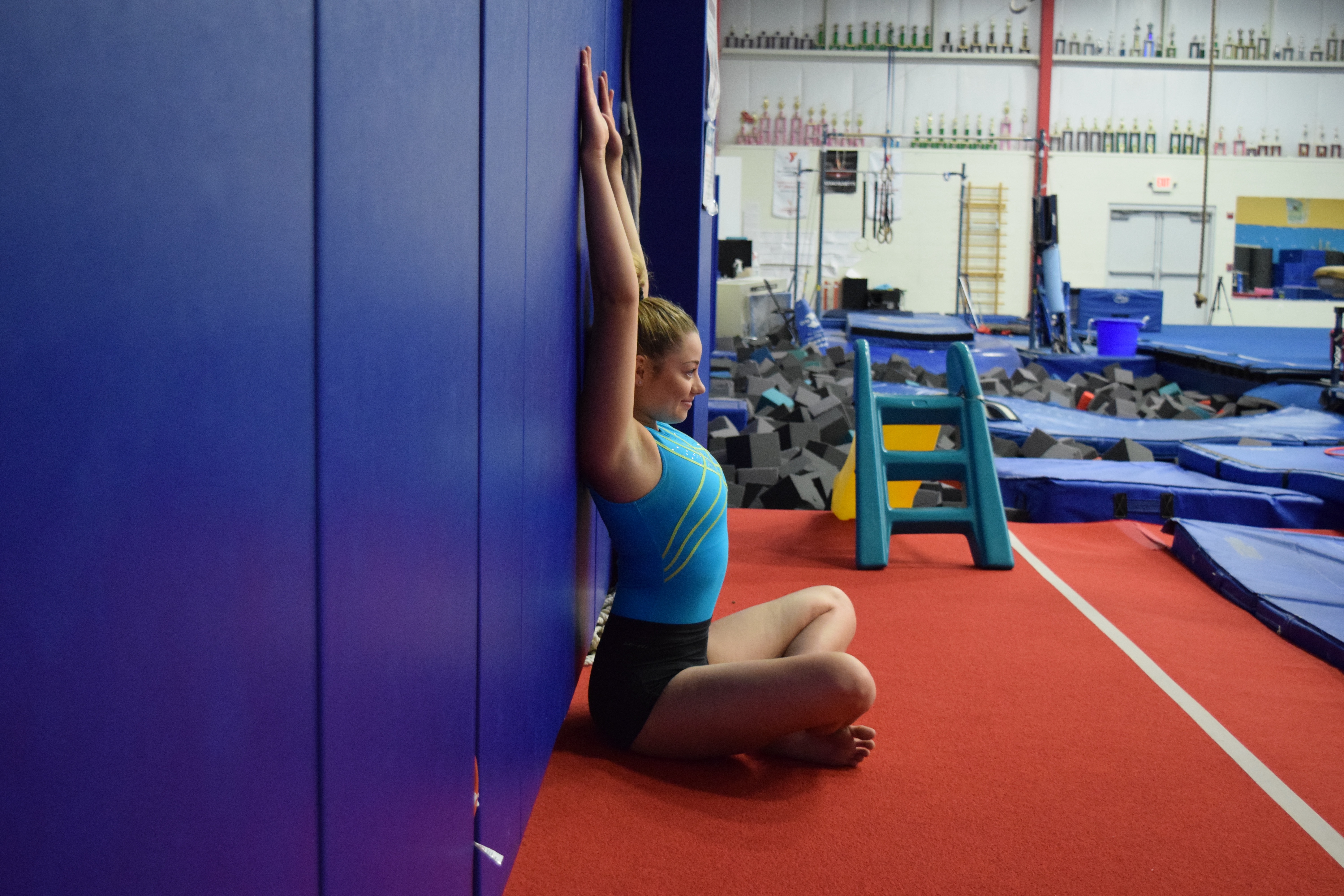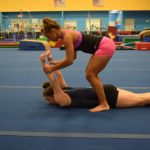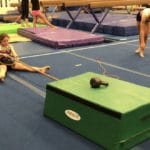Are Gymnasts Being Limited By Strength & Conditioning That Isn’t Individualized Enough?
If any readers had a similar up bringing in gymnastics to me, strength and conditioning was of course a staple in training. Come strength time you were given an assignment that was the same level of difficulty say 3 sets of 10 pull ups, dips, handstand push ups, 2 sets of 20 leg lifts or whatever your coach had in store. Then you went and started hammering away while your coach was on top of you not letting you cheat or miss numbers. Also really common was to do the same exercise together all as a group say like everyone hanging from a bar and a coach counting out pull up reps , or circling up to count out “abs”. For whatever it was, my memories and the coaching experiences over my 10 years is that it’s often a “one size fits all” approach where you did the exact exercise you were told. If you couldn’t do it, you struggled your way through it and got the job done by whatever means necessary. However, I will tell you now that I don’t think this blanket approach is the best, where all your gymnasts do the same level of difficulty for the given exercise. I think there are a a lot of problems that come up, and it’s more beneficial to offer variations of the strength exercise that serve the same purpose but with the appropriate challenge level.
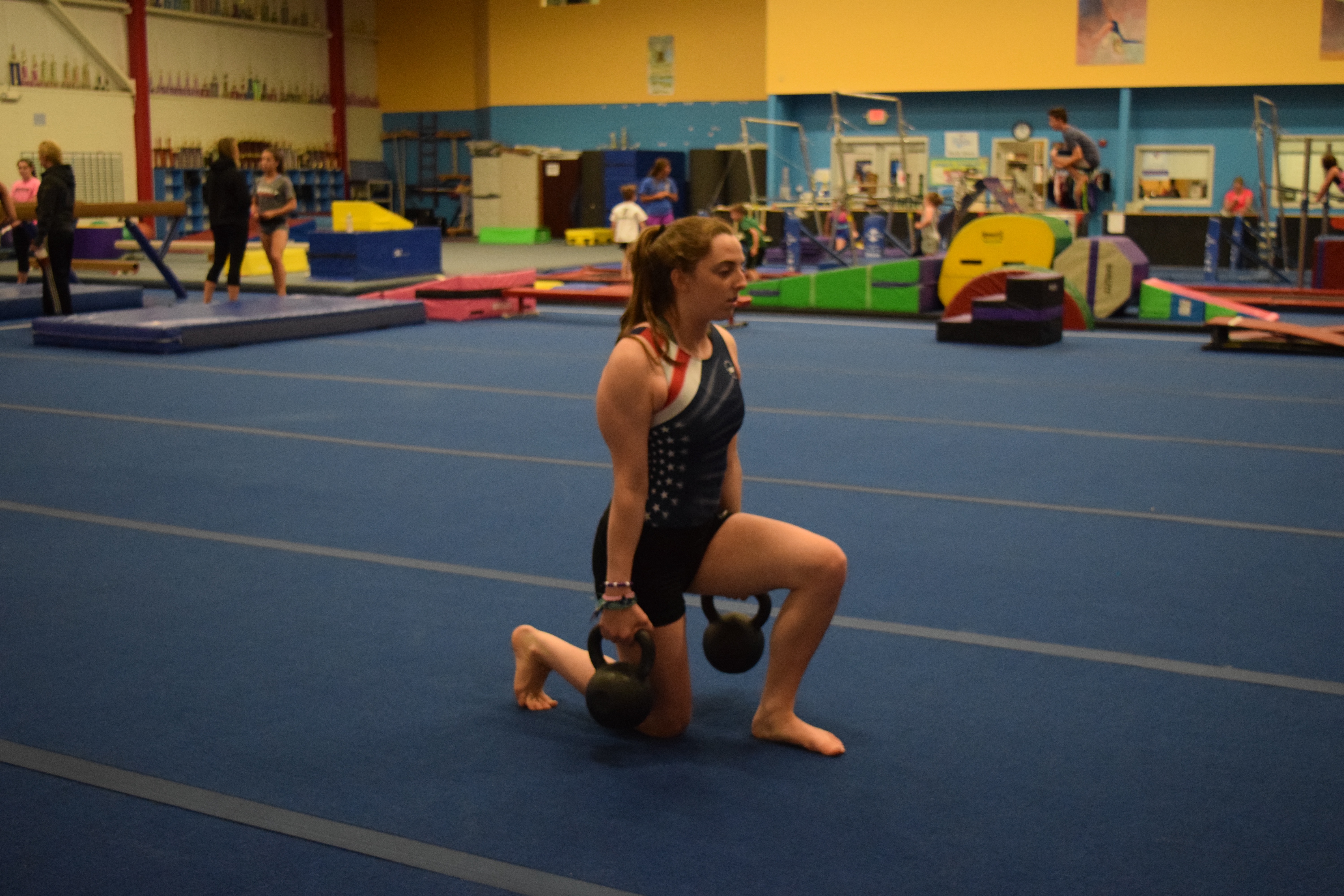
The Problem with Not Individualizing Gymnastics Strength and Conditioning
I have learned a lot about this concept from the strength and conditioning coaches I work with like Dave Picardy, Andy Tysz, and the other crew around my area. I wanted to share some of my thoughts how I’ve changed my thinking and what I do in the gym with my team from learning more. When we train skills for our gymnasts like a giant, do they all get the same exact drills for each skill? I wouldn’t say so. Sure we probably have a lot of great drills to work on certain parts, but half of the art to coaching is finding the right drill fix for the gymnast’s issue.
You wouldn’t want to give a cast handstand drill if it’s a tapping problem. On the same lines I don’t think you would want to just keep swinging bad giants. Many would say you need to regress back to the drill correction and fix the issue driving the problem. As coaches we are experts at breaking down technical parts to skills and creating progressional models.
Why don’t we apply this concept and do the same thing for strength and conditioning exercises, tailoring the strength to the gymnasts ability levels and what they need more specifically? If a gymnast is really struggling to do a leg lift or push up and shows terrible mechanics, why do more instead of regressing them to an easier version? I view a strength regression as a parallel to the giant example above, with it serving as a “drill” to work on quality of movement for the strength exercise at hand. Here’s a few thoughts into why I think this is important.
1. Goldielocks & The Three Bears / Strength Exercise Bell Curve
I use this type of example when I explain it to coaches or my own gymnasts. The basic idea is if you have a group of gymnasts with all different strength levels but you say everyone a the same difficulty standard to perform at, inevitably they will fall into 3 categories. It will either be appropriately challenging, it will be too challenging, or it won’t be challenging enough. We’re looking for everyone to be in some sort of a Goldilocks zone, not too hard, not too easy, but just right. I think this is best shown with the bell curve type illustration.
If we give 20 girls the same assignment for strength, we are assuming that they are all at the same level of strength/capability/technical level, etc. The reality of the situation is that that this is rarely the case across all your strength and conditioning exercises. You create a situation where the more developed or stronger athlete’s won’t get any benefit, and at the same time we may be promoting compensation/lack of benefit for under developed athletes. I feel we need to use regressions or progressions in order to get people in their “Goldilocks” window for strength and conditioning. If we are just blanketing an general strength program of 3 sets of 10 handstand push ups or 40 leg lifts on a huge group with differences between them, I think it’s a recipe for disaster both in terms of safety and missing out on athletic performance development.
I can’t tell you how many gyms I’ve been a part of or conditioning circuits I’ve seen (unfortunately some of my own as well) where every gymnast does the same level of difficulty in their strength despite having huge difference in age/ability/strength level. Some coaches use different sized weights/tubes/etc for an exercise, but the issue might be with poor performance of the basic exercise itself. If you are on top of your game already as a coach and really divide and conquer finding the appropriate strength exercises, props to you and keep at it. I know I used to be guilty of it don’t get me wrong, but I have moved away from it in the last year after learning more. It’s not uncommon in our gym to see a handful of girls doing 3 different versions of a push up based on their abilities during strength. Which leads to point #2.
2. Gymnast’s are Individuals, With Different Characteristics
I’m not sure why so many gymnastics programs still demand uniformity with their strength where everyone does the same exercise despite the large gaps in ability. The one argument I can see for this uniform type is to monitor the gymnasts and keep an eye on quality. I totally get that and think it’s important, but it doesn’t mean gymnasts at different levels can’t to a regression/progression thats appropriate for them. Is it because it’s just how we all have been raised to do it when we were gymnasts with a coach wanting to see if all done by a “standard” of movement? Is it unfortunately partially a coaches ego driving the OCD type influence and need for structure/command over it? Again, I’m all for structure and discipline but you could have an age gap of 5 years on your entire optional team with a whole host of different movement and strength profiles. I understand strength is hard, but you can still be hard with it also being smart. If we are using the same difficulty level for an exercise when the gymnasts have different levels of strength/ability, I get concerned with the effectiveness and safety of it for each gymnast.
Don’t get me wrong, I want my gymnasts to get stronger to the point where they can do the harder variation. But sometimes you have to realize that slamming a square block into a triangular hole may not be the best choice. The whole “1 step back for 2 steps forward later” and building a house on a concrete foundation versus sand analogy is a good fit here. Like I said, many coaches are great at this. But I think theres a lot of people out there tossing a very difficult version of an exercise onto their entire team with a lot of gymnasts suffering as a result. As coaches and as gymnasts, I think we have to understand and use the concepts of strength progressions and regressions (also can utilize what Charlie Weingroff includes as a “lateralization”) just like we do with skills. Here is a gymnastics skill example I think readers can use to understand.
3. Promoting Compensation, Movement Dysfunction, and Possible Injury Risk If Too Challenging
Say for example part of your conditioning assignment is 3 sets of 5 handstand push ups (just a random number). You send your team of 20 gymnasts to do it. Maybe for-12 of them, they are appropriately challenged by the work load, they fall in the middle of the bell curve, and it will serve it’s job to make them adapt and get stronger. However, for 4 of them it may be too challenging and with the “get it done” mind set they may have to cheat their range of motion, use poor form like excessive back arching, or may simply just not do it. Not only is this dangerous and engrains movement dysfunction as quality slips away, it also really doesn’t help them on the performance side because they wont truly develop strength. When you add in fatigue things start to tank even faster. It will likely get them to be overwhelmed and frustrated. Taking them a step back in a regression that demands perfect technique is both better for their safety and long term development of strength.
You have to take the time to explain to the gymnast that its not about being “weak” or like regressing is a punishment. I tell the girls I coach that it is simply making sure that quality and proper development are the focus, so that they can truly get stronger and in the long run be a better/safer gymnast. I use the same comparison I did above for gymnastics skills, saying that it wouldn’t make sense to keep doing bad giants. Rather than learning how to do a bad giant, we just have to take a step back and keep working the basics behind it. It’s all in the way you present it.
An important topic for me here is that of leg lifts and box jumps. If your gymnast isn’t strong enough to control their core and do a proper leg lift, they are in the wrong boat and 3 sets of 10 is only engraining compensation and bad habits. If they don’t know how to squat properly, or are on a box that is too high for them to show good control/quality, box jumps also aren’t the right path and you need to regress them/ explore other options. Quality in strength carries over to quality in skills.
4. Not Promoting Adaption/Development If Not Challenging Enough
The other side of the coin to the example, there may be 4 athlete’s who breeze through them and as a result don’t really get a challenge that stimulates adaption/development. Although this is not really as concerning with the compensation and danger side, they aren’t going to continue to get stronger/fast/more powerful, etc. These athlete’s need a progression to make sure it’s challenging enough for them. A coach needs to be in tune with this idea, and have a stocked arsenal of progression/regressions to go to for each of their exercises during strength. Many of it will happen on the fly if you pick up on something during strength, which is another reason why coaches need to be attentive during strength/conditioning for quality. Like I tell many people, although I care about injury I’m also a coach at heart and want to see my athlete’s succeed. Going hard on well designed strength is one of the biggest ways to get there.
Putting It All Together
Gymnastics Skill and Strength Exercise Comparison for Regression/Progression
Baseline Skill/Exercise: Overshoot to 45 degrees on bars
- Overshoot not performed well in “X” scenario, not done properly or has technical error /safety issue = needs regression based on current stage
- Regressions examples: increasing coaches spot to learn the skill pattern, low bar to floor overshoot drill using roller, overshoot to lowbar with resipit behind bar or no bar at all.
- Overshoot performed well in “X” scenario and demonstrates safety, consistency, technical mastery, etc = needs progression based on current stage
- Progression examples: reducing spot, taking away mats or resipit behind bar, teach drills for overshoot handstand, train pirouette connection in front of to increase difficulty
- If the end goal ofan perfect overshoot to 45 degrees is attained, from there it’s not so much a regression/progression as it is continuing to maintain the skill for performance.
Here would be a strength exercise comparison with the same template in mind.
Skill/Exercises: Handstand Push Up
- Handstand pushup not performed well during strength. Doesn’t touch head for full range of motion, arches back and loses form quickly. Over Challenging = Needs Regression:
- Regression examples: 90 degree piked handstand push up using box, use partner spot or band assistance, reverse tripod push up progression to further de-load the amount of body weight (good for younger athletes)
- Handstand push performed very well, not challenging for athlete, able to easily handle the reps/volume with good quality. Under Challenged = Needs Progression:
- Progression examples: reduce assistance from external block/person, increase reps or weight, use time parameters to increase challenge, work free standing with lighter spot
- If things look good quality wise and it is challenging enough, keep at it. Allow for adaption and once they feel ready then you can start to progress them more. Appropriate Challenge = Keep At It
Let me just conclude by saying that I know this concept is hard to implement ideally, especially in a group setting. I’m living it as a coach, and I still struggle to be attentive to all of our girls during conditioning making sure quality is promoted. Along with that I know it’s tough to make sure everyone has an ideal progression/regression if they need it.
There is a huge component to the gymnast being aware and tuned into the quality of their conditioning, and that really just comes down the individual. Take time to research on the concept, check out some resources in the strength and conditioning world, and explain to your gymnasts why this aspect to strength is important. As a coaching staff together on the same page, you can talk the similar language and know where everyone headed.
This is a big area I think many gyms can take advantage of to help promote lower risk of injury, as their gymnasts go through proper progression and develop the strength they need to tolerate the demands of gymnastics. Also, as a coach I know that the long term benefits will be pretty big, and I can tell you from my own experiences I have seen some great results by applying this type of method in the last year. Chat with your staff about some good ideas, and try to get some regressions/progressions working in for the gymnasts that need it. Hope everyone liked this,
Dave
References:
- Weingroff C. Lateralization’s and Regressions DVD; 2014
- Weingroff C. Training = Rehab, Rehab = Training DVD; 2009
- Lloyd RS., Oliver Jon: Strength and Conditioning For Young Athlete’: Science and Application; Routledge Publishing 2014
- Brukner, Kahn, et al: Bruknerand Kahn’s Clinical Sports Medicine 4th Edition,McGrawl -Hill Education 2014
- Oscar E. Corrective EXERCISE
 Solutions to Common Hip and Shoulder Dysfunction. Lotus Publishing: California; 2012
Solutions to Common Hip and Shoulder Dysfunction. Lotus Publishing: California; 2012 - Cook G., McGill S. Assessing Movement: A Contrast In Approaches and Future Directions
- Cook G. Movement: Functional Movement Systems : Screening, Assessment, and Corrective Strategies. Santa Cruz, CA: On Target Publications, 2010.

